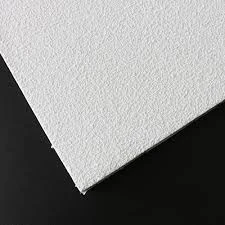- Afrikaans
- Albanian
- Amharic
- Arabic
- Armenian
- Azerbaijani
- Basque
- Belarusian
- Bengali
- Bosnian
- Bulgarian
- Catalan
- Cebuano
- Corsican
- Croatian
- Czech
- Danish
- Dutch
- English
- Esperanto
- Estonian
- French
- German
- Greek
- Hindi
- Indonesian
- irish
- Italian
- Japanese
- Korean
- Lao
- Malay
- Myanmar
- Norwegian
- Norwegian
- Polish
- Portuguese
- Romanian
- Russian
- Serbian
- Spanish
- Swedish
- Thai
- Turkish
- Ukrainian
- Uzbek
- Vietnamese
ພ.ຈ. . 15, 2024 22:31 Back to list
suspended ceiling t grid system
Understanding the Suspended Ceiling T Grid System
The suspended ceiling T grid system is an essential component of contemporary building design, serving both functional and aesthetic purposes. Often used in commercial and industrial spaces, this innovative system consists of a network of T-shaped metal fixtures that support ceiling panels, offering a seamless and modern finish. This article explores the various aspects of the suspended ceiling T grid system, including its components, installation process, benefits, and common applications.
Components of the T Grid System
The core of the suspended ceiling T grid system lies in its components. The primary elements include main runners, cross tees, and wall angles.
- Main Runners These are the long, horizontal tracks that run the length of the room. They are typically spaced 4 feet apart and serve as the backbone of the grid system. - Cross Tees These are shorter pieces that connect perpendicularly to the main runners, forming a grid pattern. They are available in various lengths, allowing for customization based on the size of the ceiling panels. - Wall Angles These L-shaped metal pieces are installed along the perimeter of the room, providing support for the edges of the ceiling panels and offering a finished look.
Installation Process
Installing a suspended ceiling T grid system involves several steps
1. Planning and Measurement Before installation, proper planning is crucial. Measurements must be taken to determine the layout and dimensions of the ceiling.
2. Installing Wall Angles The first step is to attach the wall angles to the walls around the room, ensuring they are level and secure.
3. Hanging Main Runners The main runners are then hung from the ceiling using wires or hooks. These should be spaced correctly according to the design plan.
4. Inserting Cross Tees Once the main runners are in place, cross tees are inserted to create the grid. This forms a sturdy framework to support the ceiling panels.
5. Adding Ceiling Panels Finally, the ceiling panels are laid into the grid. Panels come in various materials, including mineral fiber, metal, and gypsum, enhancing the ceiling’s acoustic properties and aesthetic appeal.
suspended ceiling t grid system

Benefits of Suspended Ceiling T Grid System
The suspended ceiling T grid system offers several significant benefits
- Versatility One of the key advantages of this system is its versatility. It can accommodate various ceiling panel types, allowing for customization based on design preferences and functional needs.
- Accessibility The suspended ceiling provides easy access to plumbing, electrical, and HVAC systems, allowing for convenient maintenance and repairs without major disruptions.
- Improved Acoustics Many ceiling panels available today are designed to enhance sound absorption, helping to reduce noise levels within commercial spaces, which is particularly important in open office environments.
- Aesthetic Appeal The clean, modern look of a suspended ceiling can elevate the overall appearance of a space, making it more inviting and professional.
Common Applications
Suspended ceiling T grid systems are commonly found in a variety of settings, including
- Offices and Workspaces To create a professional environment that meets acoustic and aesthetic requirements. - Educational Institutions In classrooms and lecture halls, where sound control is essential.
- Healthcare Facilities To accommodate overhead equipment and meet hygiene standards.
- Retail Spaces To present an inviting atmosphere that enhances product displays.
In conclusion, the suspended ceiling T grid system is an indispensable element of modern construction that merges functionality with aesthetic appeal. Its adaptability, ease of installation, and practical benefits make it a popular choice for various applications, ensuring that interior spaces are both visually pleasing and functionally efficient. Whether in an office, school, or healthcare setting, the T grid system continues to play a pivotal role in contemporary architecture.
-
Transform Interiors with PVC Gypsum Ceiling: A Stylish, Durable, and Moisture-Resistant SolutionNewsMay.19,2025
-
The Smart Interior Upgrade: Discover the Durability and Versatility of Gypsum Ceiling Access Panel SolutionsNewsMay.19,2025
-
The Smart Choice for Interior Design: Discover the Value of PVC Gypsum Ceiling SolutionsNewsMay.19,2025
-
Mineral Fiber Ceiling Tiles: The Smart Blend of Performance and AestheticsNewsMay.19,2025
-
Mineral Fiber Ceiling Tiles: The Superior Choice Over Gypsum for Sound and Fire SafetyNewsMay.19,2025
-
Mineral Fiber Ceiling Tiles: Eco-Friendly Strength and Style for Every CeilingNewsMay.19,2025







